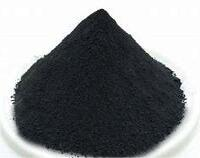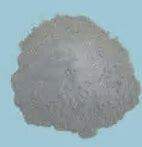1. Introduction
Titanium powder—often referred to as ti powder—is a versatile material used across aerospace, medical implants, additive manufacturing, and even pyrotechnics. But with so many forms like pure titanium powder, ti6al4v powder, titanium nitride powder, and tio2 nano powder, it’s easy to feel overwhelmed. Plus, questions about titanium powder price, safety, and sourcing pop up constantly. This guide cuts through the noise with clear, actionable steps to help you use, store, and buy titanium powder safely and effectively.

2. Understanding the Different Types of Titanium Powder
Not all titanium powders are the same. Knowing which type you need is the first step to success.
2.1. Pure Titanium vs. Alloy Powders

Pure titanium powder is great for corrosion-resistant applications and some biomedical uses. But if you’re into 3D printing, you’ll likely need titanium alloy powder like ti64 powder (also called ti6al4v powder), which offers superior strength and is the go-to for aerospace and medical parts.
2.2. Specialized Powders
Beyond standard grades, you’ll encounter niche materials like titanium carbide powder (for cutting tools), titanium diboride powder (used in ceramics), and even titanium flash powder (for special effects). Tio2 powder—titanium dioxide—is entirely different; it’s a white pigment used in cosmetics and sunscreens, not metal processing.

2.3. Production Methods Matter
Gas atomized titanium powder is spherical and ideal for 3D printing due to its flowability. HDH titanium powder (Hydride-Dehydride) is angular and cheaper but less suited for additive manufacturing. Always match the powder morphology to your application.
3. Common Uses of Titanium Powder
Titanium powder uses span multiple high-tech industries:
- Titanium powder for 3D printing (additive manufacturing) is booming, especially with demand for lightweight aerospace components.
- Titanium metal powder is used in sintering, metal injection molding (MIM), and cladding.
- Titanium nitride powder and titanium carbide powder serve as hard coatings and wear-resistant additives.
- TiB2 powder and titanium boride powder enhance composite materials.
- Even tih2 powder (titanium hydride) is used as a foaming agent in metal foams.
4. How to Safely Handle Titanium Dust
Titanium dust is flammable and can be pyrophoric in fine forms—meaning it can ignite spontaneously in air. Follow these safety steps:
- Always work in a well-ventilated area or use a fume hood.
- Avoid open flames, sparks, or static electricity.
- Store in sealed, inert containers (argon or nitrogen is ideal).
- Wear proper PPE: gloves, goggles, and a respirator rated for metal dust.
- Never use water to extinguish titanium fires—it can worsen the reaction.
5. Buying Titanium Powder: What to Know
Ready to buy titanium powder? Here’s how to do it smartly.
5.1. Compare Titanium Powder Price Per Kg
Titanium powder price varies widely. Pure titanium powder might cost $100–$300/kg, while ti6al4v powder price can range from $300 to $600/kg or more. Titanium powder for 3D printing price is usually higher due to strict quality controls (e.g., spherical shape, low oxygen content). Always ask for certificates of analysis.
5.2. Choose a Reputable Titanium Powder Supplier
Look for suppliers with ISO certifications and experience in your industry. International titanium powder vendors often serve global markets with consistent quality. Avoid suspiciously low prices—they may indicate poor purity or irregular particle size.
5.3. Watch Out for Confusing Terms
Don’t confuse titanium metal powder with tio2 powder—titanium dioxide is non-metallic and used in paints or food. Similarly, burnt titanium powder coat refers to a surface finish, not a raw material.
6. Titanium Powder vs. Other Metal Powders
While titanium is prized for its strength-to-weight ratio, you might also consider alternatives like molybdenum powder or tungsten powder depending on your needs.
Molybdenum metal powder (moly powder) offers high-temperature stability and is used in furnace parts. Molybdenum disulfide powder (mos2 powder) is a dry lubricant—not for structural use.
Tungsten powder, especially spherical tungsten powder, is ultra-dense and used in radiation shielding or kinetic penetrators. Tungsten carbide powder is extremely hard and common in cutting tools.
Unlike titanium, tungsten powder price per kg can be lower, but density and processing differ greatly. Always match material properties to your application.
7. Troubleshooting Common Issues
7.1. Poor Print Quality in 3D Printing
If your titanium 3d printing powder isn’t flowing well, check for moisture absorption or irregular particle shape. Use only gas atomized titanium powder for reliable results.
7.2. Unexpected Reactions During Sintering
At what temperature does titanium powder sinter? Typically 1200–1400°C, but oxygen contamination can cause embrittlement. Always sinter in vacuum or inert atmosphere.
7.3. High Costs
If titanium powder cost is a concern, consider recycled powder (if certified) or switching to HDH powder for non-critical applications—but never compromise on safety or specs for critical parts.
8. Conclusion
Whether you’re exploring titanium powder for sale for the first time or optimizing your additive manufacturing workflow, understanding the types, safety protocols, and market dynamics is key. From ti6al4v powder price to choosing between gas atomized and HDH methods, every detail matters. Always prioritize quality, safety, and supplier reliability—and remember that titanium powder isn’t just another metal powder; it’s a high-performance material that demands respect and precision.
Our Website founded on October 17, 2012, is a high-tech enterprise committed to the research and development, production, processing, sales and technical services of ceramic relative materials such as How. Our products includes but not limited to Boron Carbide Ceramic Products, Boron Nitride Ceramic Products, Silicon Carbide Ceramic Products, Silicon Nitride Ceramic Products, Zirconium Dioxide Ceramic Products, etc. If you are interested, please feel free to contact us.
